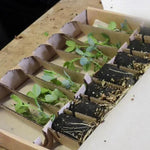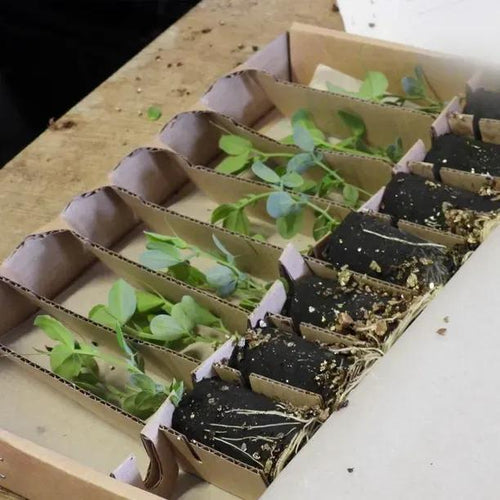Promise Sweet Pea Plants
A dashing sweet pea of two parts, Promise has a pink standard petal that gradates back to white in the lower part of the petal while the wings are a dazzling white. It's a full on frilly sweet pea with undulating edges and bags of charm. It has a lovely fragrance - not quite as strong as some of the more antique, heirloom sweet peas - and there are about four flowers per long, strong stem. It harks back to and improves upon the first and most loved bi-coloured sweet pea, Painted Lady.
Browse our sweet pea range.
Our Sweet Peas are delivered in purpose-designed, recycled cardboard packaging, and are ready to be planted out when you get them.
We generally send them out between March and May, but we will email you with the likely delivery timescale once you have placed your order.
Features
- Colour: bi-coloured, pink standard and white wings
- Stem: long, straight
- Height: 1.8 m
- Type: Spencer
- Scent: Good
- Flowering: June to August
- Planting Months: March-June
Garden Design Ideas
We love the idea of this sweet pea climbing up a pergola intertwining with a pink rose or white rose. Its flowers are obvious enough to really stand out and the mingling of the scents would be very special. We offer several pinks, whites or a combination of the two in our range of sweet peas so that you could grow some stunning bouquets - try Cathy, Gwendoline, Anniversary and White Supreme for proper pink and white perkiness. Promise is an outstanding cut flower, lasting well in a vase and certainly lives up to all of its promises.
History & Trivia
This sweet pea was raised by Roger Parsons (who supplies our seeds)and introduced onto the market in 2008. He holds the National Collection of Lathyrus odoratus and was awarded the Henry Eckford Gold Memorial Medal for services to sweet peas by the National Sweet Pea Society.








 Secure, One-Tap Checkout
Secure, One-Tap Checkout
 Hand Picked, Delivered to Your Door!
Hand Picked, Delivered to Your Door! 1 Year Bareroot Guarantee
1 Year Bareroot Guarantee




